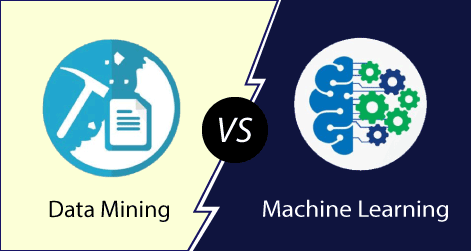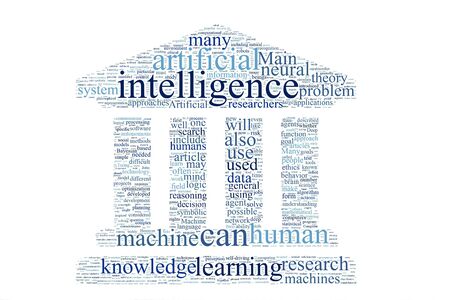
What is AI testing? Artificial intelligence tests are computer programs that produce, test, and verify AI models. Although the models are mostly automated, they still require validation by testers. AI models work more like driver assistance programs than actual autonomous vehicles. They will learn from experiences, just like humans. Their accuracy will increase with more data points and more experience. Here are some common examples of AI tests. Then, you'll know whether AI is a good fit for your product.
Artificial Intelligence
The buzzword in tech circles right now is AI. Its potential for introducing new sources of growth and revolutionizing work in all industries is undeniable. According to a PWC article, AI could be worth $15.7 trillion by 2035. This boom is expected to benefit both the United States and China, with China accounting for 70%. Here are just few of the many uses that artificial intelligence could have.
Computer Vision: Computers can now deduce meaningful information from visual inputs and take action based on that information. Computer vision is powered not by other AI systems capable of performing image recognition tasks but rather by convolutional neuro networks. Applications of computer vision range from photo tagging on social media to radiology imaging and autonomous vehicles. Artificial Intelligence in sales: AI can identify new leads and opportunities. It can improve sales execution with guided selling.

Automated Testing
Automated testing can be automated with AI to reduce the time and effort required to create test cases. Automating your test automation process will make it easier to automate and reduce the manual steps. AI can be trained in specific tasks. AI could be trained to win at Jeopardy and not at chess.
AI can also assist teams in creating more reliable test cases by overcoming flaky test scripts. It can also spot patterns in random test fails. If a small modification is made to an app's user interface, a test script will fail. Algorithms-based solutions for testing can detect these modifications and automate the process without any additional cost or manpower.
Self-healing
The Ai self-healing test is fairly simple. The test starts by retrieving the failed object from its historic object repository file. It then saves the objects to the "Object Capture” table using a similarity scoring method. The AI can then select among these objects in less than 0.05 seconds. The self healing algorithm returns the highest score. Ai scripts have an adaptive wait feature and element prediction, but these effects can be minimal.
A self-healing Ai testing has several advantages. First of all, it eliminates the need to spend time manually fixing broken locators. With the self-healing capabilities, all the changes that affect the UI don't affect the stability of automated E2E tests. TestProject's unique self-healing capabilities are highly flexible. They can automatically detect any UI changes without requiring manual intervention, allowing teams to focus on adding new features and fixing broken tests.

Root cause analysis
Late delivery complaints were a problem for a company that sells printed goods. Customers were unhappy with the service. However, agents couldn't see the larger picture because they were too busy with their own issues. The company did a root cause analysis. This identified the root cause, and recommended a practical solution. The solution could be as simple or complex as a new piece software or process. It may be as simple as a new piece of software or a process, or as complicated as staffing up to handle the high volume customer inquiries.
One problem that AI has is its inability to locate the field when it checks. An effective solution is to define a custom MICR line to lock on to that particular field. To fix a problem in which an AI fails to correctly identify a check for a company, it is possible to perform a root cause analysis. The root cause analysis report can be used to identify the root cause and make recommendations for improvements that will improve overall efficiency.
FAQ
Which countries lead the AI market and why?
China has the largest global Artificial Intelligence Market with more that $2 billion in revenue. China's AI industry is led by Baidu, Alibaba Group Holding Ltd., Tencent Holdings Ltd., Huawei Technologies Co. Ltd., and Xiaomi Technology Inc.
China's government is investing heavily in AI research and development. China has established several research centers to improve AI capabilities. These include the National Laboratory of Pattern Recognition, the State Key Lab of Virtual Reality Technology and Systems, and the State Key Laboratory of Software Development Environment.
Some of the largest companies in China include Baidu, Tencent and Tencent. All of these companies are currently working to develop their own AI solutions.
India is another country that has made significant progress in developing AI and related technology. India's government is currently focusing its efforts on developing a robust AI ecosystem.
What are some examples AI apps?
AI is used in many areas, including finance, healthcare, manufacturing, transportation, energy, education, government, law enforcement, and defense. These are just a few of the many examples.
-
Finance – AI is already helping banks detect fraud. AI can scan millions upon millions of transactions per day to flag suspicious activity.
-
Healthcare - AI is used to diagnose diseases, spot cancerous cells, and recommend treatments.
-
Manufacturing - AI in factories is used to increase efficiency, and decrease costs.
-
Transportation - Self-driving cars have been tested successfully in California. They are currently being tested all over the world.
-
Utilities use AI to monitor patterns of power consumption.
-
Education - AI has been used for educational purposes. Students can communicate with robots through their smartphones, for instance.
-
Government - AI can be used within government to track terrorists, criminals, or missing people.
-
Law Enforcement - AI is used in police investigations. Search databases that contain thousands of hours worth of CCTV footage can be searched by detectives.
-
Defense – AI can be used both offensively as well as defensively. Artificial intelligence systems can be used to hack enemy computers. Defensively, AI can be used to protect military bases against cyber attacks.
Who was the first to create AI?
Alan Turing
Turing was first born in 1912. His mother was a nurse and his father was a minister. After being rejected by Cambridge University, he was a brilliant student of mathematics. However, he became depressed. He took up chess and won several tournaments. After World War II, he worked in Britain's top-secret code-breaking center Bletchley Park where he cracked German codes.
1954 was his death.
John McCarthy
McCarthy was born in 1928. Before joining MIT, he studied mathematics at Princeton University. The LISP programming language was developed there. In 1957, he had established the foundations of modern AI.
He died in 2011.
Is Alexa an artificial intelligence?
The answer is yes. But not quite yet.
Amazon developed Alexa, which is a cloud-based voice and messaging service. It allows users use their voice to interact directly with devices.
The Echo smart speaker was the first to release Alexa's technology. However, similar technologies have been used by other companies to create their own version of Alexa.
These include Google Home, Apple Siri and Microsoft Cortana.
Statistics
- That's as many of us that have been in that AI space would say, it's about 70 or 80 percent of the work. (finra.org)
- The company's AI team trained an image recognition model to 85 percent accuracy using billions of public Instagram photos tagged with hashtags. (builtin.com)
- In 2019, AI adoption among large companies increased by 47% compared to 2018, according to the latest Artificial IntelligenceIndex report. (marsner.com)
- Additionally, keeping in mind the current crisis, the AI is designed in a manner where it reduces the carbon footprint by 20-40%. (analyticsinsight.net)
- A 2021 Pew Research survey revealed that 37 percent of respondents who are more concerned than excited about AI had concerns including job loss, privacy, and AI's potential to “surpass human skills.” (builtin.com)
External Links
How To
How to setup Siri to speak when charging
Siri can do many things. But she cannot talk back to you. This is because there is no microphone built into your iPhone. Bluetooth or another method is required to make Siri respond to you.
Here's how Siri can speak while charging.
-
Select "Speak When locked" under "When using Assistive Touch."
-
To activate Siri, hold down the home button two times.
-
Ask Siri to Speak.
-
Say, "Hey Siri."
-
Say "OK."
-
You can say, "Tell us something interesting!"
-
Speak out, "I'm bored," Play some music, "Call my friend," Remind me about ""Take a photograph," Set a timer," Check out," and so forth.
-
Speak "Done"
-
Say "Thanks" if you want to thank her.
-
If you are using an iPhone X/XS, remove the battery cover.
-
Reinsert the battery.
-
Assemble the iPhone again.
-
Connect the iPhone to iTunes
-
Sync your iPhone.
-
Allow "Use toggle" to turn the switch on.